Premiere Audience
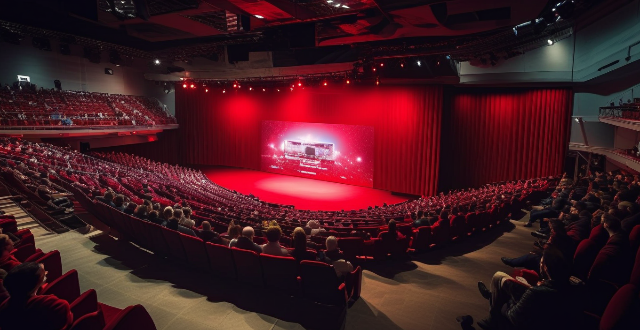
What happens at a movie premiere ?
A movie premiere is a glamorous event that marks the first public screening of a film. It typically includes red carpet arrivals, media interviews, fashion statements, anticipation builds during the screening, reactions from the audience, applause at the end of the film, a question and answer session with the cast and crew, insightful questions from the audience, behind-the-scenes stories shared by the creators, thank yous expressed by the team, an afterparty for networking and socializing, celebration among cast and crew members, fun activities such as music, dancing, and food. Overall, a movie premiere combines glitz and glamour with genuine appreciation for cinematic artistry.
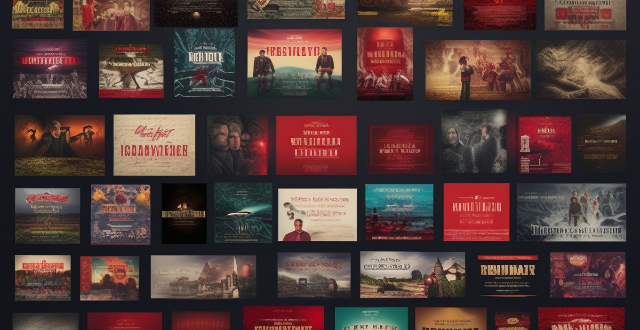
What is a movie premiere ?
A movie premiere is the first public screening of a film, attended by cast, crew, media, critics, and fans. It includes red carpet arrivals, speeches, screening, and after-parties. Premieres are crucial for marketing, generating buzz, and networking. Notable premieres include blockbusters, indie films at festivals, and online premieres.

How do I get tickets to a movie premiere ?
Attending a movie premiere is a dream for many film enthusiasts. Here's a guide on how to get tickets to a movie premiere: 1. **Follow the Movie's Social Media Accounts:** Keep an eye on official accounts and engage with content. 2. **Join Official Fan Clubs or Newsletters:** Sign up for updates and participate in contests. 3. **Monitor Entertainment News Websites:** Check sites like BuzzFeed and IMDb for premiere details. 4. **Look for Promotions from Cinema Chains:** Check loyalty programs and partner promotions. 5. **Attend Film Festivals:** Buy passes early or volunteer for access to premieres. 6. **Network within Film Circles:** Join forums, attend screenings, and build connections. 7. **Directly Contact the Production Company or Distributor:** Make official requests politely. 8. **Be Prepared for Last-Minute Opportunities:** Stay flexible and have funds ready. Persistence and luck are key factors in securing premiere tickets.
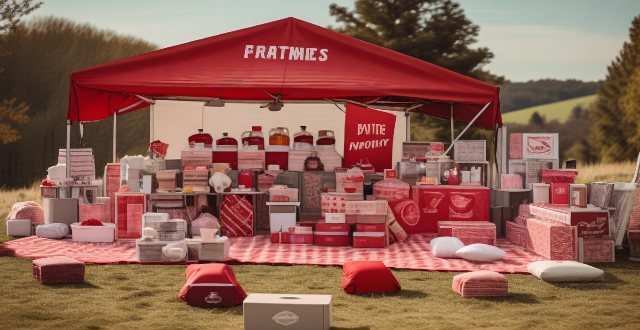
What is the difference between a red carpet event and a movie premiere ?
The article discusses the differences between a red carpet event and a movie premiere. The main differences are in their purpose and nature, attendees, activities and format, media coverage, and fan interaction. A red carpet event is a more general term that can refer to any event where guests walk on a red carpet, while a movie premiere is a specific type of red carpet event that celebrates the release of a new film. Attendees at a movie premiere are usually limited to the cast and crew of the film, invited guests such as critics and industry professionals, and VIPs, while a red carpet event may have a broader range of attendees depending on its nature and purpose. The activities and format of a movie premiere typically involve a screening of the film followed by a Q&A session with the cast and crew, while a red carpet event can take many forms, from award ceremonies to product launches to fashion shows. Media coverage at a movie premiere tends to focus more on the film itself and its cast and crew, while a red carpet event may receive coverage that is more diverse in nature. Fan interaction at a movie premiere is primarily there to see the stars of the film and show their support for the project, while at a red carpet event, fans may be there for various reasons, such as supporting their favorite celebrity or showing interest in the event's theme or cause.

What are the benefits of attending a movie premiere ?
Attending a movie premiere offers exclusive experiences, glamorous atmospheres, and potential media coverage. It provides opportunities for networking, behind-the-scenes access, and early reviews that can influence public perception. Additionally, attendees receive swag bags and have chances to create lasting memories. Overall, it's an immersive experience in the world of film.

What should I wear to a movie premiere ?
Attending a movie premiere requires dressing up in chic, elegant attire. Men should wear a tuxedo or suit, while women opt for evening gowns or cocktail dresses. Consider rich jewel tones and classic black and white combinations. Ensure comfort and fit, prepare for the weather, and add personal style elements to stand out on the red carpet.
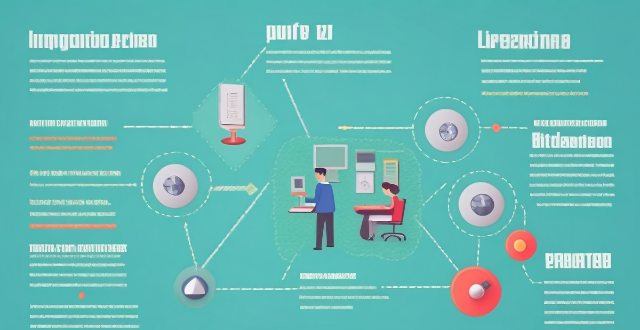
How do I determine the target audience for my infographic ?
Creating an infographic requires identifying the target audience to tailor content and design. The guide includes analyzing the content, identifying demographics, considering interests and behaviors, researching competitors, creating audience personas, and testing and refining the infographic for better resonance with the target audience.

How do you create a sports marketing campaign that resonates with your target audience ?
Creating a sports marketing campaign that resonates with your target audience requires understanding their interests, preferences, and behaviors. Define your target audience by demographics, psychographics, and behavioral factors. Conduct market research through surveys, focus groups, and competitive analysis. Develop messaging that highlights benefits, values, and emotional appeal. Choose channels such as social media, email marketing, and events that align with your target audience's interests. Measure your results by tracking KPIs, A/B testing, and adjusting and optimizing over time.

How do sports documentaries differ from fictional sports films in terms of audience reception ?
Sports documentaries and fictional sports films differ in audience reception due to their distinct approaches to storytelling, emotional impact, and overall purpose. Sports documentaries focus on real-life stories, providing an authentic portrayal of athletes, teams, and events, while fictional sports films prioritize entertainment value, often incorporating drama, comedy, or romance elements alongside sports action. Documentaries typically follow a linear narrative structure, focusing on a specific timeline or event, while fictional films often feature complex plot twists and character arcs that add depth to the story. Both genres have their merits and can leave lasting impressions on audiences in different ways.

What are some creative ways to involve my audience in live streaming content ?
Engaging Your Audience in Live Streaming Content Live streaming is a popular way for content creators to connect with audiences. Engaging viewers in real-time enhances the viewing experience and fosters community around your content. Here are some creative ways to engage your audience during live streams: 1. Interactive Polling and Quizzes Integrate polling tools like Slido or Mentimeter into your live stream to get immediate feedback from viewers. Ask questions related to the content you're streaming, allowing viewers to participate actively. Organize quizzes where viewers can answer questions related to your topic. Reward correct answers with shout-outs, digital badges, or small prizes to encourage participation. 2. Live Q&A Sessions Set aside time during your live stream for Q&A sessions where viewers can submit questions. Answer viewer questions on the spot, making them feel heard and valued. Promote a Q&A session ahead of time, allowing viewers to submit questions beforehand. Address pre-submitted questions during the stream, ensuring a steady flow of engagement. 3. Co-Streaming and Guest Appearances Invite guests to join your live stream, adding fresh perspectives and attracting a wider audience. Co-stream with other creators, cross-promoting each other's channels and expanding your reach. Feature viewer comments or reactions on screen, giving them a chance to be part of the stream visually. Incorporate viewer suggestions into the stream if possible, showing that their input is valued. 4. Interactive Games and Challenges Host games that viewers can play along with you, such as trivia or word association games. Create challenges specific to your content niche, encouraging viewers to engage creatively. Offer rewards for active participation, like exclusive access to content or personal shout-outs. Implement a point system where viewers earn points for interactions, which can be redeemed for perks. 5. Social Media Integration Use social media hashtags to create buzz around your live stream and encourage interaction outside the platform. Promote viewer posts on your story or feed, giving them more visibility and encouraging others to engage. Share behind-the-scenes clips on social media, giving viewers a sneak peek of what's coming up. Post live updates during the stream, keeping followers engaged who are not watching live. 6. Personalized Shout-Outs and Acknowledgments Give shout-outs to viewers who consistently engage with your streams. Celebrate milestones like subscriber counts or special events with personalized messages. Showcase viewer-created content related to your stream, such as fan art or cosplay. Feature viewer profiles on your social media, promoting a sense of community among your fans.

How can I find out about upcoming movie premieres ?
Finding out about upcoming movie premieres can be an exciting endeavor for film enthusiasts. Here's a summary of the different methods you can use to stay in the know: 1. **Check Movie Websites and Apps**: Platforms like IMDb, Rotten Tomatoes, and Fandango provide comprehensive information on new releases, including trailers and release dates. 2. **Follow Social Media**: Keep tabs on official movie studio accounts and influential film critics or bloggers on platforms like Twitter, Facebook, and Instagram for timely updates. 3. **Sign Up for Newsletters**: Subscribe to newsletters from movie theater chains and movie news websites to receive regular updates on new releases and special events. 4. **Use Streaming Service Alerts**: Stay tuned to announcements from streaming services like Netflix, Hulu, and Amazon Prime regarding premieres of their original content. 5. **Attend Film Festivals**: If possible, attending prestigious film festivals such as Cannes, Sundance, or TIFF can offer a first look at upcoming movies and world premieres. 6. **Check Local Newspapers and Magazines**: The entertainment sections of local newspapers and magazines often list current and upcoming movies, providing a more traditional method of staying informed. 7. **Join Movie Fan Forums and Groups**: Engaging with fellow movie fans on platforms like Reddit, Quora, or Facebook groups allows for discussions and shared excitement over anticipated releases. By utilizing these various methods, you can ensure that you're always among the first to know about upcoming movie premieres and never miss out on the films you're most excited about.

How do movie premieres impact box office sales ?
Movie premieres play a significant role in shaping the box office sales of a film by creating buzz and hype, influencing critics and audiences, building anticipation, targeting key demographics, generating early revenue, evaluating market response, and establishing awards season momentum.
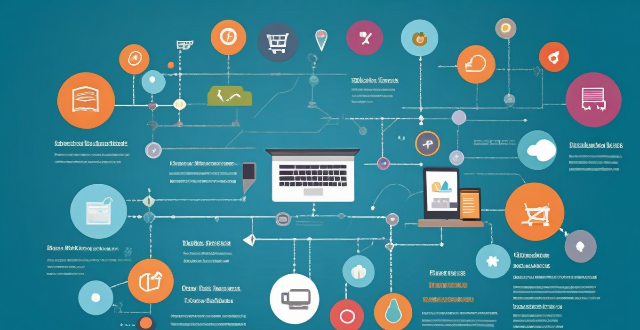
What are the key elements of a successful social media strategy ?
Key elements of a successful social media strategy include defining clear objectives, knowing your audience, choosing the right platforms, creating engaging content, optimizing for SEO, engaging with your audience, and monitoring and analyzing performance. These steps help increase brand awareness, drive website traffic, generate leads and sales, build a community around your brand, improve customer service and support, and optimize results over time.

What role does audience feedback play in shaping future live streaming sessions ?
The article explores the crucial role of audience feedback in shaping future live streaming sessions. It discusses the importance of feedback in improving content relevance, enhancing interactivity, technical optimization, and building a community. The article also suggests strategies for implementing feedback collection, such as surveys, live chat analysis, social media engagement, and email subscriptions. Additionally, it emphasizes the need for data-driven decisions, transparency with changes, and an iterative approach to continuously improve live streaming sessions.

What role do audience members play in shaping the content of celebrity talk shows ?
Audience members play a crucial role in shaping the content of celebrity talk shows by interacting with hosts, participating in social media conversations, and providing feedback through ratings and live tapings. Their contributions help make these programs engaging and reflective of public interests.

What tools or software do you recommend for enhancing audience participation in live streaming ?
To enhance audience participation in live streaming, consider implementing interactive features such as live polls and surveys, Q&A sessions, and games and quizzes. Utilize chat moderation tools like chatbots and human moderators to maintain a positive atmosphere. Integrate social media by creating unique hashtags and promoting the stream across different platforms. Offer rewards and incentives like giveaways, prizes, and loyalty programs to encourage active participation.

Who attends movie premieres ?
**Who Attends Movie Premieres?** Movie premieres are significant events where various individuals gather to celebrate the release of a new film. These attendees include: - **Creative Team**: Directors, producers, screenwriters, cinematographers, editors, music composers, costume designers, and art directors. - **Cast Members**: Leading and supporting actors, extras, and stunt performers. - **Technical Personnel**: Sound engineers, special effects teams, and other technical staff. - **Marketing and Distribution**: Representatives from distributing and marketing companies. - **Media and Critics**: Journalists, critics, influencers, and bloggers. - **Fans**: Enthusiastic moviegoers eager to see the film and meet its stars. - **VIPs and Celebrities**: High-profile guests from other industries showing support or interest in the film. These events serve as a platform for interaction between filmmakers and their audience, celebrating the art of cinema.

How do sports event organizers promote their events to attract both participants and spectators ?
Sports event organizers have a challenging task of promoting their events to attract both participants and spectators. The success of the event depends on the number of people who attend and participate in the activities. In this article, we will discuss some effective ways that sports event organizers can promote their events to attract both participants and spectators. Before promoting an event, it is essential to identify the target audience. Sports event organizers need to consider factors such as age group, interests, and demographics to tailor their promotional strategies to appeal to the specific audience. Once the target audience has been identified, sports event organizers can use various promotional strategies to attract both participants and spectators. Some effective strategies include social media marketing, influencer marketing, email marketing, traditional advertising, partnerships and sponsorships, and offering incentives. By using a combination of these promotional strategies, sports event organizers can successfully promote their events and ensure their success.

How do you create an effective sports marketing strategy ?
Creating an effective sports marketing strategy requires a deep understanding of the target audience, the sports industry, and the brand's goals. Here are some steps to follow: 1. Identify the Target Audience: Research demographics, interests, and behaviors of potential customers. 2. Define the Brand's Goals: Set specific, measurable, achievable, relevant, and time-bound (SMART) goals. 3. Conduct Market Research: Analyze competitors, trends, and consumer preferences, and identify opportunities for partnerships or sponsorships. 4. Develop a Unique Selling Proposition (USP): Highlight the brand's strengths and benefits that resonate with the target audience. 5. Create a Marketing Mix: Tailor advertising, public relations, promotions, and sponsorships to the target audience and align with the brand's goals. 6. Measure and Evaluate Results: Track key performance indicators (KPIs) such as website traffic, social media engagement, and sales revenue to identify areas for improvement and inform future marketing strategies.

How can businesses use social media to increase brand awareness ?
In today's digital age, social media has become an essential tool for businesses looking to increase their brand awareness. Here are some effective strategies that businesses can use to enhance their brand recognition through social media: 1. Define your target audience and tailor your messaging accordingly. 2. Choose the right platforms based on your target audience and industry. 3. Create high-quality, engaging content that aligns with your brand values and resonates with your target audience. 4. Leverage influencers in your niche to expand your reach and credibility. 5. Run targeted social media ads to quickly raise brand awareness and drive traffic. 6. Engage with your followers by responding to comments, messages, and mentions promptly and professionally. 7. Monitor analytics provided by each social media platform to understand what's working and refine your strategy accordingly.

What are the most effective strategies for social media marketing ?
Effective Strategies for Social Media Marketing Social media marketing is crucial for modern businesses to connect with customers, build brand awareness, and increase sales. To achieve these goals, it's important to define your objectives, understand your audience, choose the right platforms, create engaging content, use visuals, leverage influencers, monitor performance, and stay active and engaged with your audience. By implementing these strategies, businesses can create a successful social media marketing strategy that drives results and builds long-term relationships with customers.

How to find the right influencers for your brand ?
Finding the right influencers for your brand is crucial for a successful influencer marketing campaign. Here are some steps to help you find the right influencers for your brand: 1. Define Your Goals: Before you start looking for influencers, it's important to define your goals. What do you want to achieve with your influencer marketing campaign? Do you want to increase brand awareness, drive sales, or generate leads? Defining your goals will help you identify the right influencers for your brand. 2. Identify Your Target Audience: Knowing your target audience is key to finding the right influencers. Who are your ideal customers? What are their interests and preferences? Once you have a clear understanding of your target audience, you can start looking for influencers who cater to that audience. 3. Research Potential Influencers: Now that you know your goals and target audience, it's time to research potential influencers. Look for influencers who have a strong presence on social media platforms that your target audience uses. Check out their content and engagement rates to see if they align with your brand values and messaging. 4. Evaluate Influencer Metrics: When evaluating potential influencers, look at their metrics such as follower count, engagement rate, and reach. While follower count is important, it's not the only factor to consider. Engagement rate is also crucial as it shows how engaged their followers are with their content. 5. Check Influencer Reputation: Before partnering with an influencer, it's important to check their reputation. Look for any negative comments or reviews about them online. You want to work with influencers who have a positive reputation and can represent your brand in a favorable light. 6. Build Relationships with Influencers: Once you've identified potential influencers, start building relationships with them. Reach out to them through social media or email and introduce yourself and your brand. Ask if they would be interested in collaborating on a project together. Building relationships with influencers can lead to long-term partnerships and better results for your brand.

What is content marketing and how does it fit into a digital marketing strategy ?
Content marketing is a strategic approach to marketing that focuses on creating and distributing valuable, relevant, and consistent content to attract and engage a clearly defined audience. It involves the creation of various forms of content such as blogs, videos, social media posts, e-books, infographics, etc., which are designed to be helpful, informative, or entertaining for the target audience. The ultimate goal of content marketing is to convert prospects into customers by establishing a brand as a trustworthy authority in its field. Key elements of content marketing include quality content, targeted audience, strategic distribution, consistency, and call to action. Content marketing plays a central role in digital marketing strategy as it is often the foundation upon which other digital marketing activities are built. It integrates with different elements of digital marketing such as SEO, social media marketing, email marketing, pay-per-click advertising, conversion rate optimization, analytics and reporting, public relations and brand image, customer retention and loyalty, and multichannel experience.

How often should I release new unboxing videos ?
Unboxing videos have become a popular genre on social media platforms, especially for tech enthusiasts and consumers who want to see the latest gadgets in action. As an unboxing video creator, you may be wondering how often you should release new videos to keep your audience engaged and growing. Here are some factors to consider: - Audience Demand: Listen to your audience's feedback and analyze engagement metrics to determine if they want more frequent content. - Product Release Cycles: Align your schedule with product release cycles, such as monthly smartphone releases or seasonal products like holiday toys. - Content Quality vs. Quantity: Maintain high-quality content by investing time in good lighting, clear audio, and thorough explanations of the products you're unboxing. Don't sacrifice quality for quantity. - Consistency: Set a consistent schedule for releasing videos, such as weekly or bi-weekly, and communicate this schedule to your audience through social media posts, email newsletters, or at the end of each video. - Personal Capacity: Consider how much time and resources you can realistically dedicate to creating and editing videos. It's better to set a manageable schedule than to burn out by trying to do too much. - Competitive Landscape: Look at what other unboxing channels are doing and find ways to differentiate your content from others in the market. Maybe it's through humor, in-depth analysis, or focusing on niche products. There is no one-size-fits-all answer to how often you should release new unboxing videos. The key is to find a balance that works for you and your audience while maintaining quality and sustainability over time. By considering these factors, you can develop a strategy that keeps your viewers coming back for more.

How do you create a successful social media marketing campaign ?
Creating a successful social media marketing campaign requires a strategic approach that involves careful planning, execution, and monitoring. The key steps include defining goals, knowing your audience, choosing the right platforms, creating compelling content, utilizing paid advertising, engaging and interacting with your audience, and monitoring and analyzing performance. By following these steps, you can create a successful social media marketing campaign that not only meets your objectives but also establishes a strong online presence for your brand.

How do I create a successful social media campaign ?
Creating a successful social media campaign involves defining goals, knowing your audience, choosing the right platforms, creating compelling content, leveraging influencers and partnerships, using paid advertising, and monitoring and analyzing results. Goals can range from increasing brand awareness to generating leads or sales. Understanding your audience's demographics, interests, and behaviors is crucial. Selecting the appropriate platforms like Facebook, Instagram, Twitter, LinkedIn, or TikTok depends on the target audience and campaign objectives. Compelling content includes high-quality images, engaging videos, clear captions, and relevant hashtags. Collaborating with influencers and other brands can enhance reach and credibility. Paid advertising allows for targeted promotion and retargeting campaigns. Continuous monitoring and analysis of key performance indicators (KPIs) such as reach, engagement, clicks, and conversions are essential to adjust the strategy and learn from audience feedback.

How do I make my unboxing videos stand out from others ?
Unboxing videos have become a popular trend in the digital world, with millions of viewers tuning in to watch their favorite influencers unveil new products. However, with so many unboxing videos available online, it can be challenging to make yours stand out from the crowd. In this article, we will discuss some tips and tricks to help you create unique and engaging unboxing videos that will capture your audience's attention. ### 1\. Plan Your Content Before you start shooting your unboxing video, it's essential to plan your content carefully. Here are some things to consider: - **Choose the Right Product**: Select a product that is interesting and relevant to your audience. It could be something new or highly anticipated, or even a product that has received mixed reviews. - **Research the Product**: Familiarize yourself with the product's features, specifications, and benefits. This will help you create a more informative and engaging video. - **Create an Outline**: Jot down the key points you want to cover in your video, such as the packaging design, product features, pros and cons, and your personal opinion. ### 2\. Set Up Your Shooting Space The setting of your unboxing video can play a significant role in its overall appeal. Here are some tips for setting up your shooting space: - **Choose a Well-Lit Area**: Ensure that your shooting space is well-lit to produce high-quality footage. Natural light is always a good option, but if that's not possible, invest in some good lighting equipment. - **Keep the Background Simple**: A cluttered background can be distracting for your viewers. Keep your shooting space clean and simple, with minimal distractions. - **Use a Stable Surface**: Place your product on a stable surface to avoid any shaky footage during the unboxing process. ### 3\. Use High-Quality Equipment Using high-quality equipment can significantly improve the overall quality of your unboxing video. Here are some essential items to consider: - **Camera**: Invest in a good quality camera or smartphone with a high-resolution lens. This will ensure that your footage is crisp and clear. - **Microphone**: Good audio quality is crucial for keeping your viewers engaged. Use an external microphone or ensure that your built-in microphone is of good quality. - **Tripod/Gimbal**: To avoid shaky footage, use a tripod or gimbal to stabilize your camera during the shoot. ### 4\. Add Personal Touches Personal touches can help make your unboxing video more relatable and engaging for your audience. Here are some ideas: - **Introduce Yourself**: Start by introducing yourself and telling your viewers why you chose this particular product. - **Share Your Thoughts**: Share your thoughts and opinions about the product as you unbox it. This will make your video more interactive and engaging. - **Involve Your Audience**: Ask your viewers for their opinions on the product or encourage them to share their experiences in the comments section. ### 5\. Edit Your Video Professionally Editing is an essential part of creating a compelling unboxing video. Here are some tips for editing your video professionally: - **Trim and Cut**: Remove any unnecessary parts of the video that don't add value to the content. - **Add Text and Graphics**: Include text overlays and graphics to highlight key points and make your video more visually appealing. - **Use Transitions**: Add smooth transitions between different scenes to make your video flow seamlessly. - **Include B-Roll Footage**: Incorporate additional footage, such as product demonstrations or behind-the-scenes clips, to make your video more engaging. ### 6\. Promote Your Video Effectively Once you've created your unboxing video, it's time to promote it effectively to reach a wider audience. Here are some promotional strategies: - **Optimize Your Video Title and Description**: Use relevant keywords in your video title and description to improve its searchability on YouTube and other platforms. - **Share on Social Media**: Share your unboxing video on your social media channels, such as Instagram, Facebook, and Twitter, to reach a broader audience. - **Collaborate with Other Influencers**: Partner with other influencers in your niche to cross-promote each other's content and expand your reach.

How do you create engaging and effective digital ads ?
Creating engaging and effective digital ads is crucial for businesses to stand out in the crowded online space. Here are some tips on how to create compelling digital ads: 1. Know Your Audience: Research your target audience's preferences, behaviors, and pain points to create buyer personas that represent your ideal customers. 2. Clear and Concise Messaging: Clearly communicate the unique value proposition of your product or service, highlight the benefits, and include a clear and compelling call to action (CTA). 3. Visual Appeal: Use high-quality images that resonate with your target audience, maintain consistent branding, and consider incorporating video content for better engagement. 4. A/B Testing: Create multiple versions of your ad with different elements, track key performance indicators (KPIs), and optimize your ad based on the best-performing variations. 5. Social Proof: Include customer testimonials or reviews, share case studies, and collaborate with influencers to build trust and credibility. 6. Mobile Optimization: Ensure that your ad is optimized for mobile devices, minimize load time, and make sure CTAs are easily clickable on smaller screens. By following these strategies, you can create digital ads that not only capture attention but also drive conversions and achieve your marketing goals.

How do sports journalists balance their responsibilities to inform and entertain audiences ?
The article discusses the dual role of sports journalists in informing and entertaining their audiences. It outlines key responsibilities, strategies for balancing these roles, and ethical considerations. Sports journalists must provide accurate information while making coverage engaging through storytelling, visual elements, and audience engagement. Ethical standards such as truthfulness, fairness, and respect are crucial for maintaining trust with audiences.

How can I make my food photos stand out on social media ?
To make food photos stand out on social media, focus on good lighting, composition, styling, angles, post-processing, captioning, and audience engagement. Natural light is preferred, harsh shadows should be avoided, and the rule of thirds applied for better composition. Styling can involve using complementary props and colors, while experimenting with different shooting angles adds variety. Post-processing should be subtle and consistent. Captions should tell a story, and relevant hashtags used. Engaging with your audience helps build community.